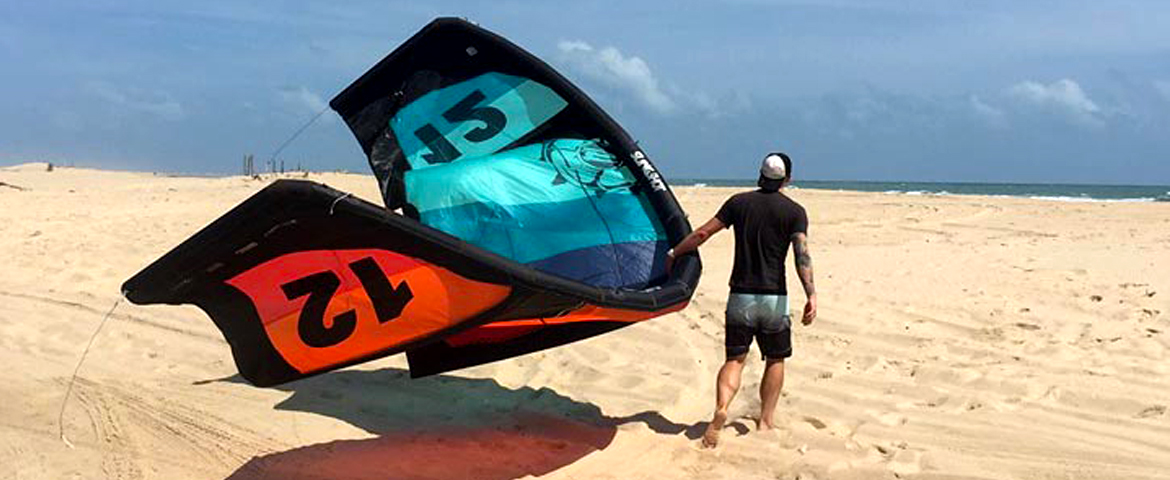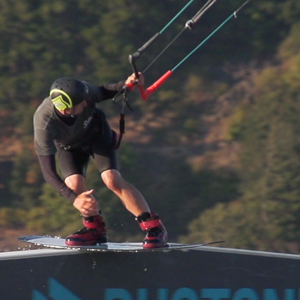Pop to Blind & Landing Blind: Kiteboarding Tutorial - Unhooked
Today we’re going to breakdown another fundamental move. The Pop to Blind or Landing Blind. This is a variation of the first two videos in this playlist. One of the most important skills to learn in freestyle or wakestyle kiteboarding is the blind landing. Landing blind makes anything you do look way better. The mistake most people make is thinking they need to learn this move powered. Something I’m pushing on our fundamentals playlist is all advanced kiteboarding tricks are a combination of the basics.
Like any sport, control needs to come before power. You don't see beach volley ball players spiking the ball without learning how to hit it correctly and place it first. Why would you go for a powered landing and risk it without the control factor?
If you hope to land anything to blind or learn any rotations like the Blind Judge and beyond you’ll want to spend more time on this trick than you think. The hardest part of landing blind is the fear of catching an edge. The goal of this video is to teach the skills needed to prevent that and to get you consistent with your blind landings. If you practice this enough; once you start passing in the air; blind landings will come naturally.

Click here to download your free
PDF
Prerequisites
Prerequisites for this trick are riding toeside the surface pass and the ollie that we covered in our first popping video.
Like the surface pass, this can and should be practiced on those light wind days. Chances are you’ll be the only one on the water and you’ll make progress.
Once you get this trick dialed you should be ready for a Raley to Blind.

Landing blind is the most fun fundamental move in kiteboarding
Trick Overview
Like the surface pass, set your leash on your front hand side and keep the kite at 45 or a little lower. Come off your edge ride downwind and unhook. It’s really helpful to get into the practice of splitting the centerline with your pointer finger. You’ll want to do this for all blind landings moving forward. Next, you’ll want to ollie. The trick to this is keeping a little bit of tension in the lines. Unlike a powered pop, you won’t be loading and scooping. Remember, it's just an ollie.
Keep the bar in close, load a bit of tension into your kite lines with the edge of your board. Keep it very light for this trick at first. Make sure you are riding slightly downwind while doing this. Push down with your back leg and bring your front knee up into your chest. As you pop off the water, a couple of things need to happen at the same time. Look over your back shoulder and bring your back leg up and out of the water. Pull the bar into your lead hip towards the small of your back. You want to twist your control bar and touch the back of your hand into the small of your back.
Point your toes while you spin
Think about your feet while you are doing all of this. The trick to not catch an edge is to point your toes down while you are spinning the back 180. If at any time you land before you spot your landing, you won’t catch your edge. Just commit to the rotation just like your surface pass. After you make the pass, it's good to hold it and ride for a bit in the blind position. You can put your other hand back on the bar for more control or just ride blind. It takes a bit of core and legs strength to ride with the bar behind your back. this will come with time. Ride as far in this position as you can riding downwind maintaining a mild edge. The more time you spend in the blind or wrapped ridding position, the more natural it's going to feel dropping into them from powered tricks.

You should have mild line tension while popping
Take the correct angle when popping
The biggest mistake on this trick is trying to ride upwind or even across to the wind when landing. You need to be riding downwind and at the kite. The same applies to popping. If you load while going downwind, you won't get any pop. If you load while edging too hard, the bar will pop out of your hand. Find the sweet spot where you can control the line tension.
Don’t let the bar get away from you. This is the most common mistake in more advanced tricks as well. Getting the habit of keeping the bar close to your hips right away is a great idea and necessary for this drill. Lastly don’t try this too powered at first. Get the fundamental move down and work your way up.

You can see I get my legs out of the water to avoid catching an edge
Evasive Measures
Learning how to crash properly is important too. If you watch a hard-charging rider fall, you'll notice they all scoop out and throw their legs up. This is because no one wants to catch an edge. The technique is similar to a snowboarder stoping a back-180 rotation with their toes. Of course, it's always better to land flat and downwind with perfect control but keeping your toes pointed while rotating in the air prevents an accidental edge catch while spinning. this is the same motion you would make during a surface pass. This is part of why that drill is a prerequisite for this trick.
If you land early with your toes pointed you can keep your heel side edge elevated. From here, you have a couple of options. You could ride downwind and pull the trick off. If you have to bail, you could let go of the bar and ride downwind to recover. If all else fails and you are going to eat it, you can scoop out, throw your legs up and do a body flop into the water. This looks intense but it sure beats catching an edge and getting slammed into the water.
Take this drill step by step and spend as much time as needed doing surface passes and Poping to Blind. Progressively pop bigger and bigger over time. It amazes me how everyone wants to skip steps in the process. I can appreciate pushing your limits and moving forward but you still have to pay your dues, put in the time in and progress your abilities with practice.
So that's it! Get out there and give it a try.
If you have any questions, feel free to look me up on instagram; add me and I'll answer any questions you might have.

Kiteboarding equipment used for this playlist
The past 5 years I've changed my setup every season. These are my top choice kites and kiteboards. If you're interested in unhooked riding, these are my personal recommendations. If you have any gear questions, you can always instagram me with questions.
My 2020 gear picks for this list are the Slingshot RPM. My quiver consists of a 10, 12, and 14m, and the Slingshot Refraction 147.
Kites
Slingshot RPM
Cabrinha FX
Liquid Force NV V9
Duotone Dice
Kiteboards
Slingshot Refraction
Duotone Team Series
Cabrinha CBL
Naish Stomp
 Ryan (Rygo) Goloversic
Ryan (Rygo) Goloversic
Many people dream of quitting their job, traveling the world and pursuing their passions. Rygo is one of those people who pulled the trigger. A few years into his career, he decided to change everything and travel as a kiteboarder, freelance videographer & writer. His mission is to share the stoke & help people put the boarding into their kiteboarding. Get outside and kite!
Producer of: Ride with Blake I Sessions I Versus I Destinations I Foil Fridays
Recent Posts
-
North Navigator Pro Quick Release | How to Swap Yours Out With Ease
What You Need Before starting the replacement process, ensure you have all the necessary t …18th Apr 2024 -
Foil Drive | Essential Tips to Supercharge Your First Session
The Foil Drive makes your foiling life easier. You'll get up easier and catch more waves, …17th Apr 2024 -
2024 Duotone Slick Wing Review | What's New in This Year's Model?
The Duotone Slick has been a favorite of many for several years. Pros love it for its speed, …15th Apr 2024




